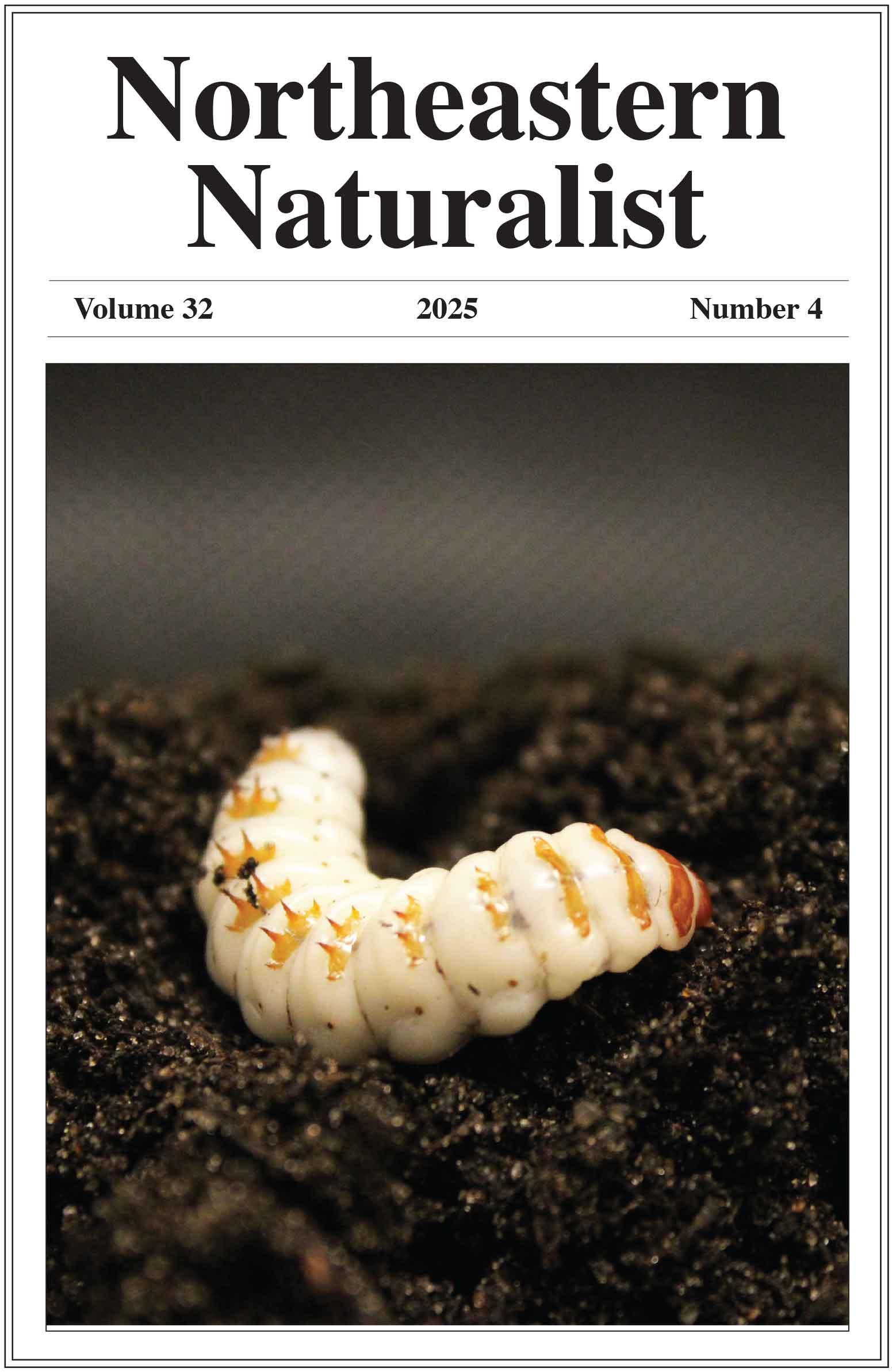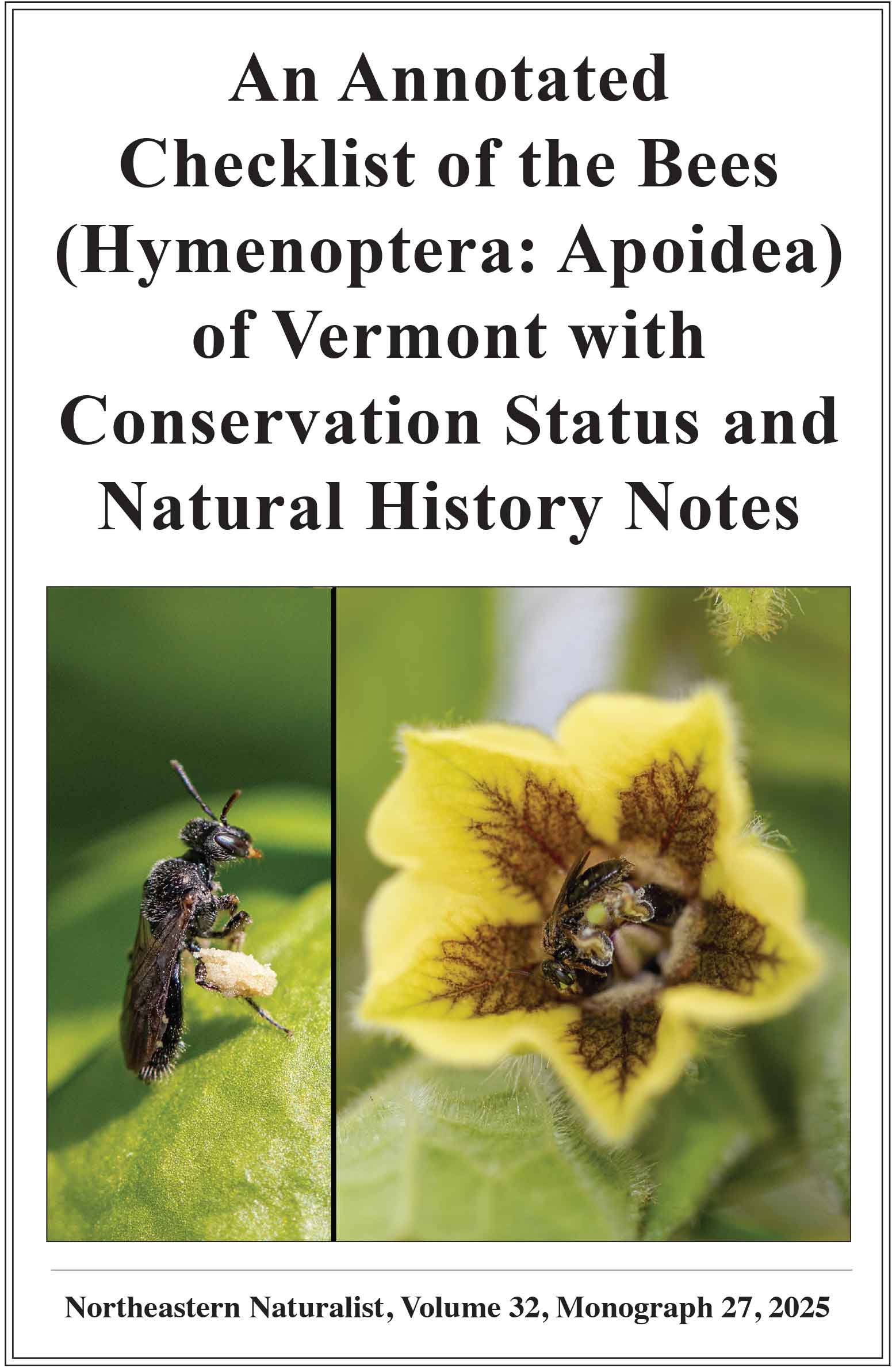Spotted Turtles (Clemmys guttata) on a Morainal Island Affected by Coastal Erosion
Michael T. Jones1,* and Stephanie L. Koch2
1Natural Heritage and Endangered Species Program, Massachusetts Division of Fisheries and Wildlife, 1 Rabbit Hill Road, Westborough, MA 01581. 2Eastern Massachusetts National Wildlife Refuge Complex, US Fish and Wildlife Service, 73 Weir Hill Road, Sudbury, MA 01776. *Corresponding author.
Northeastern Naturalist, Volume 31, Special Issue 12: C48–C56
First published early online: 31 August 2024
Abstract
We studied an offshore population of Clemmys guttata (Spotted Turtle) on a morainal island in Dukes County, MA, that served as a US Navy range from 1943 to 1996. We established a permanent study area consisting of 3 distinct wetland basins encompassing 2.11 ha (5.21 ac) of emergent marshes and ponds, including ~4.3 % of all National Wetlands Inventory-classified palustrine wetlands on the island. Within our study area, we estimated the average population size of adult turtles to be 110.1 adult turtles during 2019–2021, or a density of 52.2 turtles/ha of wetland. Among the wetlands in our study area was a 1.1-ha (2.7-ac) emergent marsh 19 m (62 ft) in elevation that had breached into the ocean immediately prior to our study as the result of coastal erosion. Twenty-two adult turtles (28%) exhibited deformed or missing limbs, despite an absence of mammalian predators. The morainal islands of southern New England appear to be vulnerable to coastal erosion that can affect freshwater wetlands more than a dozen meters above sea level. Future work at this island should evaluate the response of Spotted Turtles—at the individual and population level—to ongoing coastal erosion, and the proximate causes of limb deformity.
![]() Download Full-text pdf (Accessible only to subscribers. To subscribe click here.)
Download Full-text pdf (Accessible only to subscribers. To subscribe click here.)
Access Journal Content
Open access browsing of table of contents and abstract pages. Full text pdfs available for download for subscribers.
Issue-in-Progress: Vol. 33(1) ... early view
Check out NENA's latest monograph and Special Issue:













 The Northeastern Naturalist is a peer-reviewed journal that covers all aspects of natural history within northeastern North America. We welcome research articles, summary review papers, and observational notes.
The Northeastern Naturalist is a peer-reviewed journal that covers all aspects of natural history within northeastern North America. We welcome research articles, summary review papers, and observational notes.